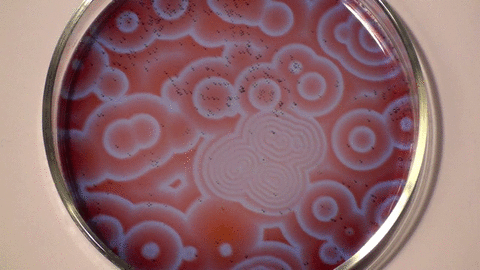We reach more than 65,000 registered users in Dec!! Register Now

BelousovĖZhabotinsky reaction
- April 01, 2014
- 731 Views
- 0 Likes
- 0 Comment
A†BelousovĖZhabotinsky reaction, or†BZ reaction, is one of a class of reactions that serve as a classical example of†non-equilibrium thermodynamics, resulting in the establishment of a†nonlinear†chemical oscillator. The only common element in these oscillating systems is the inclusion of bromine and an acid. The reactions are theoretically important in that they ...
History
The discovery of the phenomenon is credited to†Boris Belousov. He noted, some time in the 1950s (various sources date ranges from 1951 to 1958), that in a mix of¬†potassium bromate,¬†cerium(IV) sulfate,¬†malonic acid¬†and¬†citric acid¬†in dilute¬†sulfuric acid, the ratio of concentration of the cerium(IV) and cerium(III) ions oscillated, causing the colour of the solution to oscillate between a yellow solution and a colorless solution. This is due to the cerium(IV) ions being reduced by malonic acid to cerium(III) ions, which are then oxidized back to cerium(IV) ions by bromate(V) ions.
Belousov made two attempts to publish his finding, but was rejected on the grounds that he could not explain his results to the satisfaction of the editors of the journals to which he submitted his results. His work was finally published in a less respectable, non-reviewed journal.
Later, in 1961, a graduate student named Anatoly Zhabotinsky rediscovered this reaction sequence; however, the results of these men's work were still not widely disseminated, and were not known in the West until a conference in Prague in 1968.
There are a number of BZ cocktails available in the chemical literature and on the web. Ferroin, a complex of phenanthroline and iron is a commonindicator. These reactions, if carried out in petri dishes, result in the formation first of colored spots. These spots grow into a series of expanding concentric rings or perhaps expanding spirals similar to the patterns generated by a cyclic cellular automaton. The colors disappear if the dishes are shaken, and then reappear. The waves continue until the reagents are consumed. The reaction can also be performed in a beaker using amagnetic stirrer.
Andrew Adamatzky, a computer scientist in the University of the West of England reported on liquid logic gates using the BZ reaction.
Strikingly similar oscillatory spiral patterns appear elsewhere in nature, at very different spatial and temporal scales, for example the growth pattern of Dictyostelium discoideum, a soil-dwelling amoeba colony. In the BZ reaction, the size of the interacting elements is molecular and the time scale of the reaction is minutes. In the case of the soil amoeba, the size of the elements is typical of single-celled organisms and the times involved are on the order of days to years.
Investigators are also exploring the creation of a "wet computer", using self-creating "cells" and other techniques to mimic certain properties ofneurons.
 
https://www.youtube.com/watch?feature=player_embedded&v=bH6bRt4XJcw
Chemical mechanism
The mechanism for this reaction is very complex and is thought to involve around 18 different steps which have been the subject of a number of research papers.
In a similar way to the¬†Briggs¬ĖRauscher reaction¬†there are two key processes (both of which are¬†auto-catalytic); Process A which generates molecular bromine giving the red colour, and process B which consumes the bromine to give bromide ions.
One of the most common variations on this reaction uses malonic acid (CH2(CO2H)2) as the acid and potassium bromate (KBrO3) as the source of bromine. The overall equation is given below:
- 3CH2(CO2H)2 + 4BrO?
3 ? 4Br? + 9CO2 + 6H2O
- http://www.scholarpedia.org/article/...insky_reaction
- http://en.wikipedia.org/wiki/Belouso...insky_reaction
Cite This Article as
No tags found for this post









